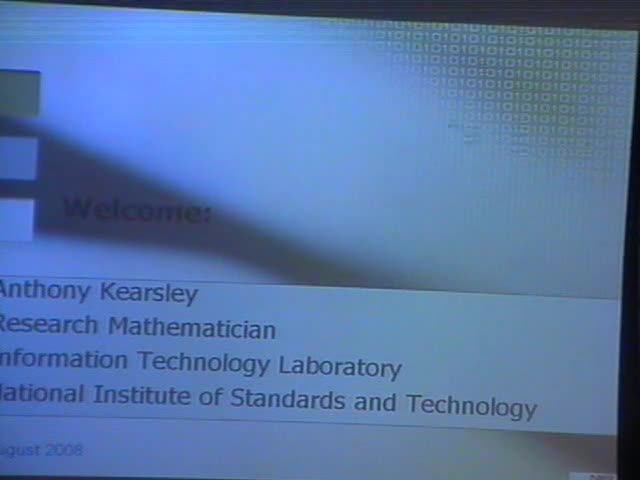Team 5: Optimal calibration in chemical spectroscopy
Presenter
August 6, 2008
Keywords:
- Chemical
MSC:
- 74E40
Abstract
Project Description:
Instruments for chemical spectroscopy are finding key application in fields of homeland security, healthcare and manufacturing of chemicals and machine parts [1]. The need to automatically analyze large amounts of data quickly and to calibrate these instruments in an unbiased way is thus becoming ever more important. In many applications, for example healthcare and law enforcement, both calibration [2] and data analysis ([3,4]) should be performed with as little operator input as possible.
One of the most important chemical spectroscopy instruments is the Matrix Assisted Laser Desorption Absorption Time of Flight (MALDI-TOF) mass spectrometer. A schematic of the instrument is shown above, and sample data output is shown below. The MALDI-TOF produces a collection of 2-tuples (usually between 50,000-100,000 pairs of data points), from which one should identify peaks and then integrate the area underneath each peak. A major challenge is the development of an automated peak peaking and peak integration algorithm requiring no operator input. A second and closely related challenge is the development of an operator independent calibration scheme.
I will outline an approach to the data analysis problem and present some very precursory work involving Standard Reference Materials (SRM). I will also present a first attempt at automatic instrument calibration. Data from larger molecules will be used as a litmus test. If time permits, I will will present at least one other spectroscopy instrument.
References:
[1] Introduction to Mass Spectrometry, J. T. Watson, Lippencott-Raven, 1997.
[2] Wallace, W. E., Guttman, C. M., Flynn, K. M., Kearsley, A. J., `Numerical optimization of matrix-assisted laser desorption/ionization time-of-flight mass spectrometry: Application to synthetic polymer molecular mass distribution measurement’ ANALYTICA CHIMICA ACTA Volume: 604 Issue: 1 Special Issue: Pages: 62-68 NOV 26 2007
[3] Wallace, W. E., Kearsley, A. J., Guttman, C. M., `An operator-independent approach to mass spectral peak identification and integration’ ANALYTICAL CHEMISTRY. Volume: 76 Issue: 9 Pages: 2446-2452. MAY 1 2004
[4] Wallace, W. E., Kearsley, A. J., Guttman, C. M., `MassSpectator: Fully automated peak picking and integration - A Web-based tool for locating mass spectral peaks and calculating their areas without user input. ‘ ANALYTICAL CHEMISTRY Volume: 76 Issue: 9 Pages: 183A-184A MAY 1 2004
Prerequisites: A programming language, (Fortran 90, C, C++, or Matlab); a course in optimization or signal processing is helpful but not necessary.
